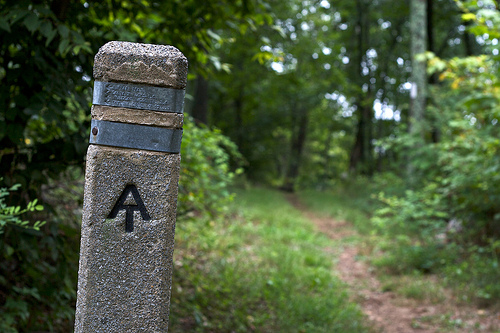The Appalachian Trail is an American legend, over 2000 miles of marked hiking trail extending from Georgia to Maine, and passing through 15 American states in all. Some people, known as Thru hikers, try and walk the whole trail in one go, which takes months, as is for the hardcore, or those with a lot of time on their hands, only.
Others, called Section hikers, will do it in stages, perhaps a few weekends a year, over a lifetime. It’s one of the great American hikes, in fact it’s world-famous, and for many keen walkers it presents an incredible challenge. For those thinking of trying the Appalachian Trail for the first time, here are some useful pointers:
Ability On an epic trek like this it’s important to know your own ability. If you overestimate it, you could be forced to quit after running out of food or stamina. It’s fun to walk as part of a group, but helps if all members are of the same ability-level, as stragglers, and those who charge ahead, can cause tension. Section hikers have the advantage that, after every trip, they can reflect on what went well and what they could have done better, and make every hike better than the last. If you want to Thru hike then you need to be in peak physical condition, and prepared to travel light so you can cover a lot of ground every day.
Essential Kit This is no ordinary hike – these are top walking holidays and you could be on the trail for months on end, so you need to pack efficiently. Clothes should be made of synthetic material that dries quickly -during the spring the rain can be torrential, and even in summer showers can appear. You don’t want to be carrying around rain-sodden clothing as the weight doubles. A poncho that will also cover your pack is also a good idea. Shoes also should be from synthetic material – some walkers swear by boots but many Appalachian pros suggest running shoes are a better bet. You want a pair with a firm grip – many stages of the trail are very rocky.
Other essentials include a water bottle, which should be filled at every opportunity especially in summer. There are abundant springs you can use, but remember to always sterilise it before drinking. First-aid kits, including plasters for blisters, will serve you well. And always bring plenty of socks! At night you want earplugs, because the insects can be very noisy, and a torch to help you make it to the outhouse. And always bring a fully-charged phone, switched off, for emergencies.
Falls are common, and many states are populated by wild bears and poisonous snakes. The risk is minimal, but you don’t want to be caught out either. There are many different types of cooking stove you can bring, but if you take one that’s fuelled by alcohol, a small bottle of alcohol can last one person several weeks, so you will have less to carry. Some form of eco-friendly detergent in pouches can come in handy, but don’t wash clothes, or leave food scraps for that matter, in springs, as you’re polluting a water source.
Shelter There are many shelters along the route, but they can be many miles apart, so plan it well. They’re often basic, but it’s a bed and a roof for the night, hey. You can also camp in the same area, which is good because it’s usually flat, and there are water sources nearby.
It’s always best to check for the rules on camping in the locations you’re planning to hike – pitching a tent just off the trail for example is convenient but often frowned upon. Don’t pitch next to a dead tree as these often fall down in the wind.

